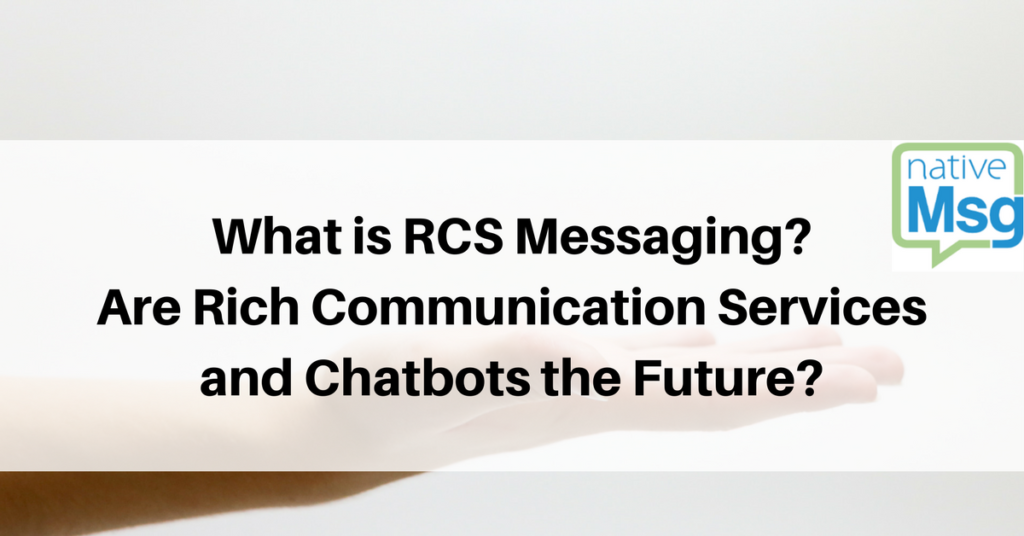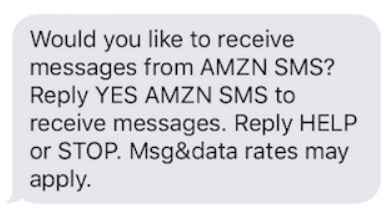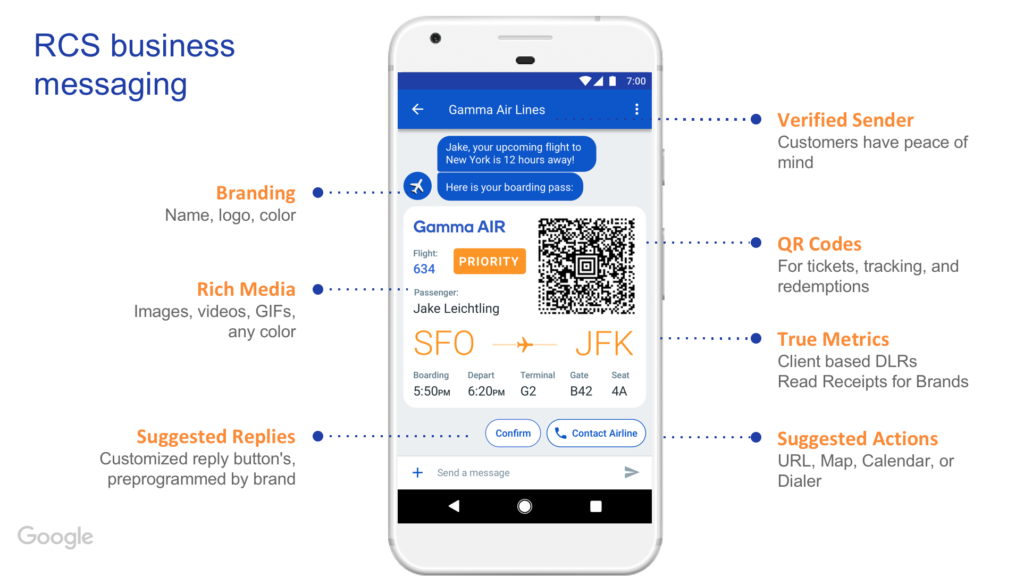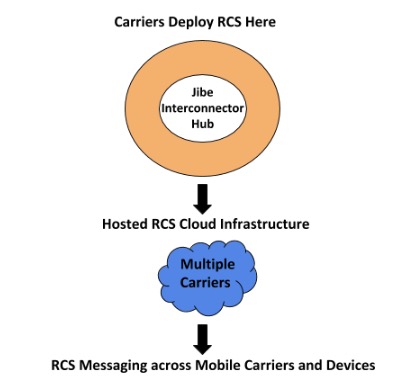
For all of you marketers and leading tech innovators who felt you had a good grasp on what’s coming down the digital pipeline in 2018, here’s a perfect curveball: B2C messaging is set to become ever more functional, but it still depends on where you set up shop.
Rich Communication Services (RCS) has been a compelling next generation rich text messaging service option for some time. But with recent moves in big tech to better steward it, RCS is a perfectly timed resource alongside advancements in conversational AI, chatbots and voice assistants.
The service combined with chatbots could realistically provide consumers with a channel-less messaging space where consumers no longer need to share similar apps to communicate directly.
Instead of reviewing where RCS has been and the infrastructure in full-detail, this post will help you learn about what RCS can do for your business and all the benefits to consumers. RCS messaging and chatbot applications can create opportunities for reach, engagement and lead-building that haven’t been previously available.
What is Rich Communication Services (RCS)?
Rich Communication Services provides rich messaging features and functionality. A current B2C text message notification in SMS typically looks like the message below:

With RCS, businesses have more options––and opportunity, to extend their branding strategies and to provide customers with a better overall experience:

- Branding with copy and graphics
- Video calls
- Rich media messaging functionality
- Secure end-to-end payment within messaging
- High-resolution image sharing
- Group chat
- Location sharing
- Read receipts
- Integration of conversational AI
You’ve come to expect many of these features within A2P mobile messaging experience, and this is the next logical step as messaging evolves.
It provides consumers with a feature-rich, prismatic experience within one default messaging app. The structure plausibly omits the multiple-app silos in communication and creates a one-click, universal space to more easily reach connections–and consumers.
Here’s how:
The Current Market Structure is Ripe for an RCS-Dominant Future
Google’s Android Messaging app is positioning to become the default messaging app for Android users. Over 50 carriers and several influential Original Equipment Manufacturers (OEMs) and Messaging Partners have agreed to provide the service through Google’s Jibe cloud platform RCS hub.
This interconnectedness allows RCS business messaging functionality across networks.
Here’s what the structure looks like:

Subscribe to our Newsletter
What are the Benefits of RCS?
1. Branding
Businesses can harness RCS API for various branding strategies:
- Brand extension
- Line extension
- Brand vision
- Brand consistency
Automakers can treat existing customers to a VIP unveiling experience of a new auto model all within an RCS-enabled message. They can even tag-on a call to action for a quick video chat about any spec questions they might have or an option to share as a group message or on social.
Airlines can create a consistent communication experience for travelers with rich media notifications that include entertainment, upgrade options, flight status and instant customer service access within the messaging space as well as in-flight.
2. Read Receipts and More
From read receipts to typing indicators, consumers have a better forum to interact with brands and to know, in real-time, about a brand’s responsiveness.
While some of these features are available in other messaging apps, RCS creates an opportunity to democratize rich features across carriers and devices.
Rich Communication Service message potentially negates the need for various video apps. Users can opt to make a video call within the same space, no matter the carrier or device.
3. Secure End-to-End Payment
RCS adds-on a secure, end-to-end payment option so consumers don’t need to leave the messaging space. There’s no need to open a new browser window or take multiple steps.
For example, consumer prescription notifications can now include a payment feature to simplify pick-up and mail-order deliveries.
4. Rich Media Experience
A carousel-scrolling experience and high-resolution imaging opens opportunities for more convenient and faster online mobile shopping.
Consumers can scroll through a carousel of sale items within a notification to save, return to or purchase an item within an RCS message.
RCS and Chatbot Applications
The more carriers and devices that offer RCS messaging, the more access there is within P2P communication. But for B2C reach, the potential is indisputable.
Businesses have heavily invested into conversational AI within current messaging channels, from Facebook to Twitter and Slack. RCS messaging service creates an even larger reach. Combine the stats below with the analytics, personalization, responsiveness that conversational Ad offers and your business has an easy opportunity to engage customers in a tremendously cost-effective way.
- Facebook Messenger has a reach of 1.3 billion users with 17 billion video chats in 2017.
- WhatsApp has a shared reach at 1.3 billion users.
- 62% of the world population owns a mobile phone with an expected 5 billion users by 2019.
- The big OS players, Android and iOS, share almost 100% of the market, but the mix is what’s most important here:
According to Gartner, Android sales in the fourth quarter of 2017 show a market share at 84.5% compared to iOS at 14%. This is consistent with fourth quarter showings in 2016.
Consider also that Google’s infrastructure and branded segmentation make these numbers an attractive vehicle that can likely dominate within cloud offerings that Amazon and Microsoft haven’t overtly navigated.
For B2C reach within messaging, the opportunity for an all-in-one suite of infrastructure as a service, platform as a service and conversational AI, or software as a service, become even more inviting.
Channel-less Messaging: The Future of Messaging?
Brands who commit in these early stages could be expertly positioned as the messaging space becomes increasingly amorphous. Omni-channel reach and marketing currently create always-open, consistent branding around every channel a consumer uses.
Rich messaging service can propel this construct from multiple access points (within social media or other messaging apps), to one simple access point. It furthers the creation of Messaging as a Platform (MaaP) with RCS driving this new landscape.
Want to know more about Messaging as a Platform? Learn how to position your brand within the messaging space here.
A universal one-click messaging app, combined with intelligent chatbot tech is a way for your business to reach exponentially more consumers, more easily and do so in a hyper-personalized fashion.
The idea is to make messaging and access easier for everyone, no matter the carrier, OS or device. The forecast, given user numbers, reach, players and data looks more promising than ever.
Free Trial
Get Started With RCS
Business Messaging!
Unlock the power of RCS and revolutionize your customer engagement.


